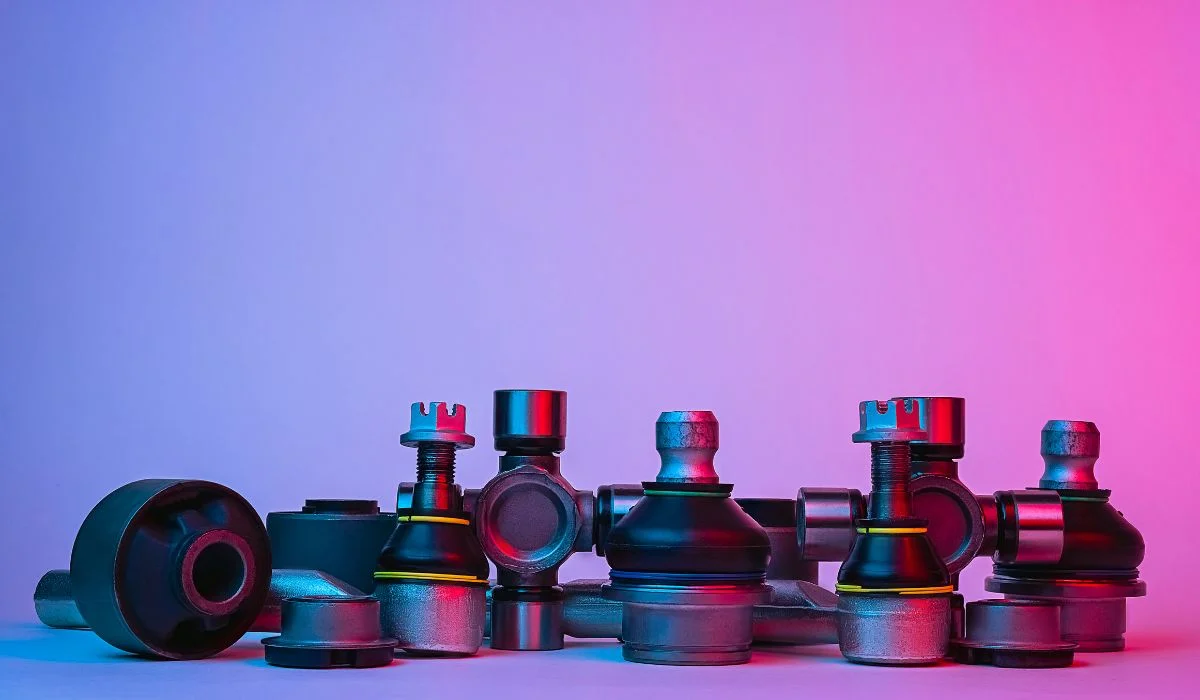Table of Contents
- Why Cost Breakdown Is a Strategic Priority
- Core Components of Automotive Manufacturing Costs
- A Smarter, Step-by-Step Approach to Cost Breakdown
- The Role of Technology in Cost Estimation
- Managing Cost Volatility in a Turbulent Supply Chain
- Integrating Sustainability Without Breaking the Budget
- Tools That Make It All Easier
- Final Thoughts
In automotive manufacturing, precision isn’t just for the shop floor; it’s essential in your cost structure, too. Without a clear view of where money is going and why, even the most efficient production line can struggle with thin margins, unstable pricing, and missed profitability targets.
This guide is designed for those exploring how to estimate better, manage, and optimize their manufacturing costs. If you’re trying to figure out exactly where your manufacturing budget is being spent… or “How do we maintain quality and innovation without overspending?”, you’re in the right place.
Why Cost Breakdown Is a Strategic Priority
Managing cost in a complex production environment is no longer about just “trimming the fat.” It’s about control— control over your pricing strategy, product competitiveness, and your ability to stay responsive as supplier conditions change and buyer needs evolve.
Manufacturers today are facing several cost-related challenges:
- Material costs are increasing, and supply chains around the world are unstable.
- Increasing pressure to innovate (especially in EVs and digital tech)
- Growing labor complexity, from training to retention
- Demands for sustainable practices that aren’t always cheap upfront
The only way to make smart decisions in this environment is with accurate, transparent cost data, and that starts with a thorough breakdown of all the moving parts.
Core Components of Automotive Manufacturing Costs

While every vehicle and plant is different, most cost structures share similar foundations. Here are the main categories you should always account for:
- Raw Materials: Steel, aluminum, plastics, semiconductors, batteries, often 50%+ of total costs.
- Labor: Both direct labor on the assembly line and indirect labor in quality control, maintenance, and supervision.
- Operations: Utilities, equipment maintenance, depreciation, safety systems.
- Overhead: Rent, administrative salaries, insurance, internal logistics.
- R&D and Innovation: Design, prototyping, testing, software development, compliance.
- Supply Chain & Logistics: Freight, tariffs, customs, third-party supplier costs.
Internal choices and external market forces influence each of these areas. Overlooking any category or misjudging its weight can lead to flawed decisions that ripple across product development, pricing, and profitability.
A Smarter, Step-by-Step Approach to Cost Breakdown
Let’s break down what an accurate, actionable cost model should look like, and how you can build one.

1. Start With Granular Cost Mapping
It’s not enough to say “electronics cost X.” You need to break that down: control units, sensors, wiring, assembly time. The more specific your component-level data, the more flexible and insightful your model becomes.
Map costs by:
- Subsystem (e.g., powertrain, body, infotainment)
- Material types and quantities
- Assembly steps and labor inputs
2. Use Real-Time Data, Not Historical Estimates
Materials and labor prices shift constantly. If you’re basing forecasts on last year’s prices, your estimates are outdated the moment they’re created.
Instead:
- Access up-to-date pricing through industry material databases and supplier platforms.
- Update labor rates based on current contracts or local market shifts
- Factor in currency exchange rates if sourcing globally
3. Account for Cost Volatility and Risk Buffers
What happens if lithium prices spike? Or if a key supplier faces delays? Build in “what-if” scenarios to simulate:
- Material price fluctuations
- Shipping disruptions or port delays
- Labor strikes or machine downtime
These simulations help you forecast financial exposure and make contingency plans ahead of time.
4. Analyze Labor Productivity and Training Costs
Labor isn’t just an hourly rate. The speed and quality of production depend heavily on how well-trained and skilled your workforce is. Ask:
- How long does each assembly step take per worker?
- How long does it take your team to get up to speed with a new vehicle model or recently hired workers?
- Do gaps in worker skills result in production errors or material waste?
Better-trained teams often reduce long-term labor costs, even if their base pay is higher.
5. Include Automation and Technology Investments
Automation brings down variable costs, but the capital investment isn’t cheap. Be sure to calculate:
- Initial system integration and hardware costs
- Software licensing and updates
- Training or reskilling costs for operators
Then assess ROI over the expected equipment life, and whether the savings are worth the upfront cost.
6. Separate R&D from Production Costs
Designing a vehicle platform involves a ton of costs that don’t belong in per-unit pricing. Keep R&D tracked independently so you can:
- Understand true product development spend
- Allocate amortized costs over vehicle volumes or model years
- Avoid inflating your COGS with non-recurring expenses
This separation also helps you see which innovations drive profit, and which ones don’t.
7. Collaborate Across Departments for Cost Accuracy
No one team can manage cost breakdowns alone. You need real-time input from:
- Engineering (for BOM and design changes)
- Procurement (for supplier pricing and logistics)
- Finance (for budgeting, forecasting, and margin goals)
- Operations (for shop-floor insights and productivity data)
Using shared tools or platforms that allow for live collaboration helps avoid version mismatches and ensures decisions are grounded in current realities.
The Role of Technology in Cost Estimation
Emerging technologies are changing not just how vehicles are made, but how costs are tracked and optimized. Digital twins, predictive maintenance, AI-driven quality inspection, and smart analytics platforms are making cost structures more transparent and cost-saving opportunities easier to find.
The trade-off? These tools require significant upfront investment, and they only pay off if they’re well-integrated into your existing processes. When evaluating new tech, production managers should consider:
- Implementation time and compatibility
- Cost of retraining or system upgrades
- Projected ROI vs. traditional workflows
Used well, technology can shift cost management from reactive to proactive and help you get ahead of problems before they hit the bottom line.
Managing Cost Volatility in a Turbulent Supply Chain

With global supply chains under pressure, stability is no longer a given. The costs of shipping, materials, and even compliance can change overnight. To reduce exposure:
- Diversify supplier base (especially for high-risk components).
- Use dynamic contracts with volume or price flexibility.
- Build moderate inventory buffers for critical parts.
- Consider nearshoring to reduce logistics risk.
Your cost models should reflect these realities, not just ideal scenarios.
Integrating Sustainability Without Breaking the Budget
Sustainability is no longer just a compliance issue; it’s an operational cost factor. Many manufacturers are finding that:
- Recycled or eco-friendly materials cost more upfront.
- Energy-efficient machinery offers long-term savings, but it comes with high CapEx.
- Consumers expect greener practices, and may pay for them.
Smart manufacturers now include a sustainability layer in their cost models, tracking the trade-offs between short-term costs and long-term benefits like regulatory credits, lower energy use, and improved brand value.
Tools That Make It All Easier

Manual spreadsheets aren’t built for today’s manufacturing complexity. Consider adopting dedicated tools designed for live cost estimation and cross-functional collaboration. Look for platforms that offer:
- Real-time supplier and market data integration
- Customizable templates for different model lines or regions
- Scenario modeling tools
- Audit trails for tracking cost changes across versions
Tools like Cost It Right are built specifically for automotive workflows, helping teams build accurate, dynamic cost breakdowns that update as designs and supplier conditions evolve.
Final Thoughts
Getting cost breakdowns right doesn’t just help with budgeting. It improves your pricing, sharpens your sourcing, and gives your team the insight needed to make confident decisions faster.
It’s not about trimming every cent; it’s about knowing where every cent goes, and making sure it’s aligned with your business goals.
If you’re serious about profitability and production agility, now is the time to audit your current approach. Start small by piloting a more integrated cost model on one vehicle line, and then build from there.





